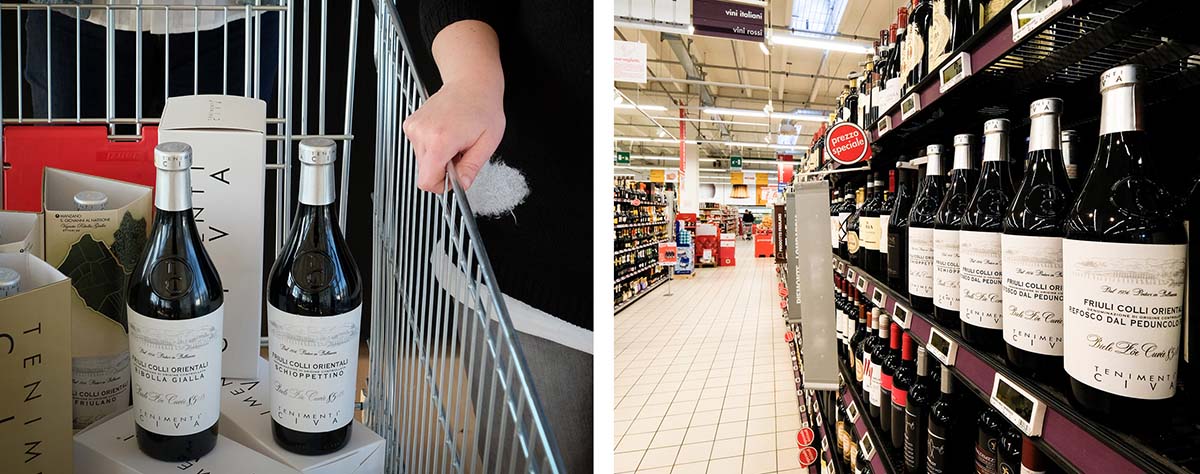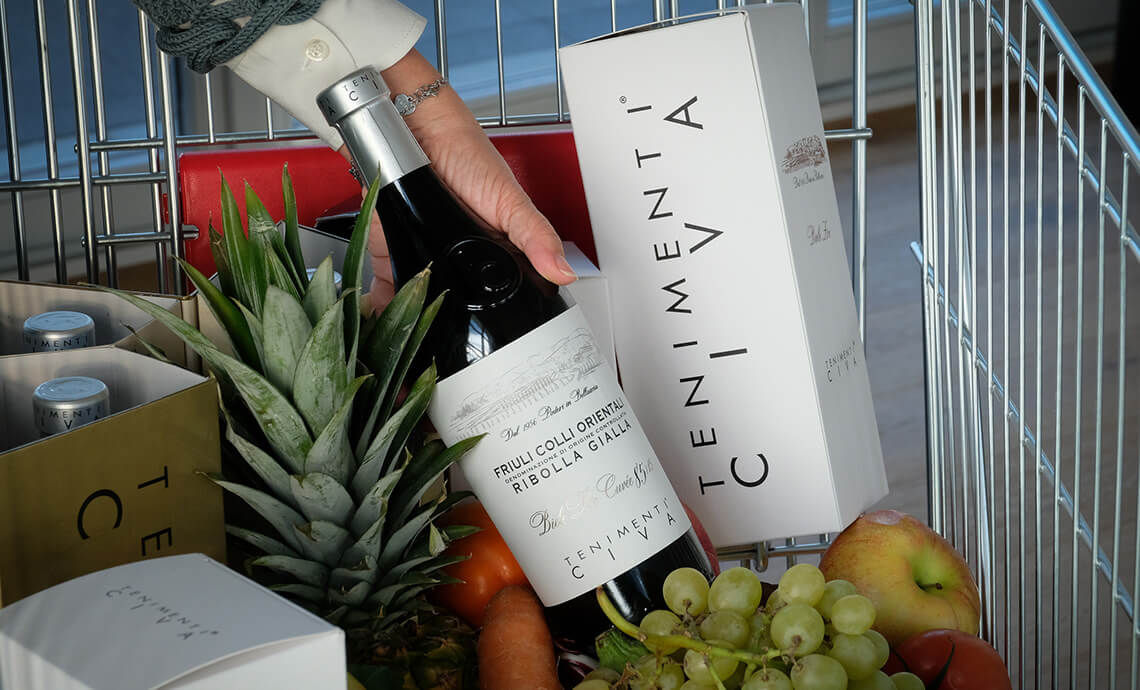How to buy wine at the supermarket: Advice from the expert!
We asked some questions to the editor of Vinialsuper.it and Winemag.it, Davide Bortone, on how to buy wine at the supermarket and on which factors to base a quality purchase.
- The equation low price = low quality is a simplification that says nothing about the product on the shelf. More representative would be an evaluation based on product type, production area and brand name. Do you agree with this? Could this be a good suggestion for the consumer who wants to buy a bottle of wine in a supermarket?
“Low price” equals “low quality” is a misleading statement, especially in a sector such as that of supermarkets, where products – in our case wines – are often subject to promotions. Obviously you need to know how to decide on a case-by-case basis. You don’t always get a bargain, but often you can. You just need to know how to choose, or be advised by those who know about wine and supermarkets.
It’s no coincidence that our column on supermarket wine promotions has always been extremely popular. While on one hand consumer knowledge is growing, on the other the purchasing capacity of the individual customer will always remain the basis on which the choice of one bottle rather than another is made.
- Supermarkets have significantly improved and diversified their product range in the wine sector. Growth in quantity has been accompanied by increased quality. The consumer can in fact buy industrial wines, wines from cooperatives, but also prestigious products at high prices from well-known brands, and wines from producers such as Tenimenti Civa, which has dedicated an important project to supermarket sales: High Quality in the Shopping Trolley. The growth in the number of bottles produced never means compromising on high standards of quality. Despite the wide range of offers, in 2018 supermarket sales of wine fell (2018 data: sales by volume down by 3.7% and turnover up by 2% compared to 2017, while those of discount stores increased. Would you recommend the purchase of wines in the latter?
I’m happy to answer this question, since I consider the question of the “retail channel” of wine to be central. In Italy, when visiting wineries or talking to those in the wine trade, one finds that there is still a clear division between supporters of supermarkets and those who don’t trust them.
Too often, the view of supermarket wine is wrong and discrediting. A tour of the “cellars” of various supermarket brands would be enough to make one realize how much has changed.
Today, also thanks to distributors who deliver small quantities of wine without going through the distribution centre of the individual supermarket chains (in other words, orders of a few cartons instead of entire pallets of wine), stockmen are able to offer their customers an even wider range of quality wines.
On the other hand, I find that the success of the “discount stores” is due to the intelligent repositioning in the sector carried out in recent years. Many brands have invested heavily in marketing and advertising to rebuild their image, without retouching prices or – essentially – also the cluster.
The quality of the product range available at discount stores has improved over the years. Today, also here, you can buy wines that offer excellent value for money. As already mentioned, however, you need to get good advice from those who know the subject!

- The supermarket retail trade carries out various checks on the products it sells: requests for certification, product analyses… Are wines with designations (DOC and DOCG) and IGT wines therefore a guarantee of quality for the consumer?
A product that ends up on the supermarket shelf undergoes a long series of checks. Wine is no exception. In this sector, the “sanitary” quality of a product is the least that can be expected in an advanced, industrialized country like ours! The maximum in terms of “quality” would instead be to always guarantee the consumer respect for the organoleptic characteristics of the DOC, DOCG and IGT wine.
This aspect is entrusted to the Technical Tasting Commissions, about which I have strong doubts. There are too many wines released onto the market (even with official designations) by bottlers who are insufficiently respectful of the terroir and the quality of the grapes. The result is a race to the bottom that is reflected on the shelves, with derisory prices that risk ruining the image of several important DOC zones. This can be seen in Italy, but is unfortunately also rampant abroad.
- Can the front and back labels be a guide in choosing wine? What things need to be taken into consideration?
That’s another issue that’s very dear to me, thanks for the question! Personally, I believe that wine labels should be legible, clear, precise and honest. I believe that legislators could take a big step forward by preventing the use of acronyms to indicate the place where a wine is bottled, which is often different from that of production.
I’m sure that many customers have found themselves faced with indecipherable acronyms or abbreviations specifying the producer and the bottler. I believe that in all the battles for clear labelling we must also focus on this: the consumer must always be treated sincerely.
- How do you explain the increase in sales of Ribolla Gialla, which in the last four to five years has recorded growth of 25/30%?
The increased sales of Ribolla Gialla is part of the general increase in demand for “fizz” from consumers. This is the long “tail end” of the Prosecco phenomenon, which has led several Italian territories to produce sparkling wines, not always with the desired results. This means a certain standardisation of taste, affecting not only improvised Charmats, but also metodo classico wines.
In this context, I believe that the Ribolla Gialla can play a territorial card that other designations lack. Obviously, everything needs to be focused on quality, because to produce a sparkling wine that’s worth its salt, it’s not enough to simply harvest the grapes early, just as this is no longer enough for a still rosé.
The ideal solution – and this is a provocation for the areas of Italy which have above all taken advantage of Prosecco’s boom – would be for wineries to to set aside plots of land with the most suitable characteristics for the production of sparkling wine, instead of using the same vineyards employed in the production of still wines.
So yes, Italian sparkling wine production would benefit from the contribution of Charmat wines from areas not historically known for the production of “fizz”.
“One vineyard, one label”: how I would love to hear all producers use this slogan!
- What could supermarket retailers do to further improve the information they provide on the wine sold on their shelves?
Supermarkets unfortunately invest only sporadically in providing information on the wines they sell. It’s a sort of unconditional surrender, which doesn’t reflect the quality of many labels now on sale. What could be done is to invest in professionals such as sommeliers or wine experts, who can help the customer make more informed purchases. I am sure that with a little more effort and investment, many chains would see turnover in the wine aisle skyrocket. It would benefit them, consumers and the entire Italian wine sector. From this point of view I will never stop being confident and believing in a better future for everyone.
Follow us on Facebook and Instagram
Maria Cristina Pugnetti
Could it be interesting for you:
None found

